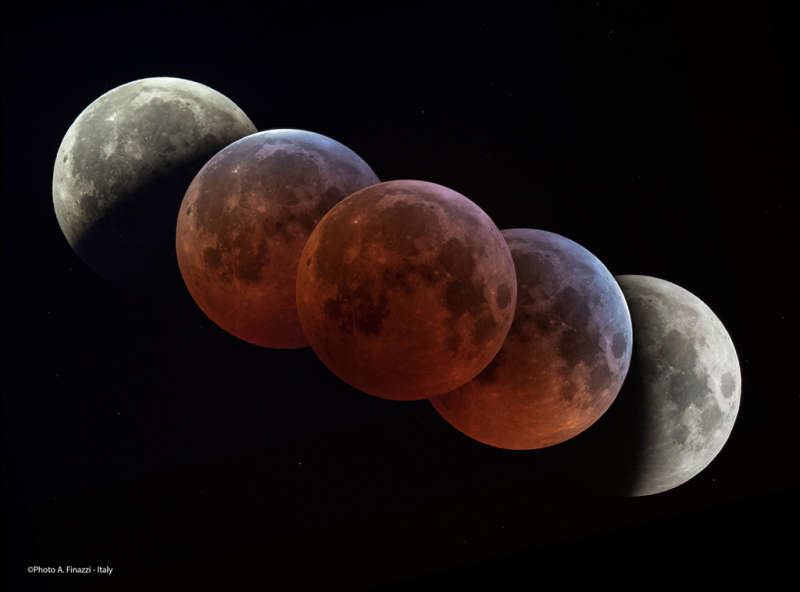
|
Credit & Copyright: Antonio
Finazzi
Explanation:
The dark, inner shadow of planet Earth
is called the umbra.
Shaped like a cone extending into space, it has a
circular cross section most easily seen during a
lunar
eclipse.
For example, on January 21 the Full Moon
slid across the northern half of Earth's umbral shadow,
entertaining
moonwatchers around much of the planet.
In the total phase of the eclipse, the Moon was completely within
the umbra for 63 minutes.
Recorded under clear, dark skies from the
hills near Chiuduno, Italy this composite
eclipse image uses successive
pictures from totality (center) and partial phases
to trace out a large part of the
umbra's curved edge.
Reflecting sunlight scattered by the atmosphere into Earth's shadow,
the lunar surface appears reddened during totality.
But close to the umbra's edge, the limb of the eclipsed Moon shows a
distinct blue hue.
The blue eclipsed
moonlight originates as rays of sunlight
pass through layers high in the upper stratosphere,
colored by ozone that scatters red light and transmits blue.
|
January February March April May June July August September October November December |
| ||||||||||||||||||||||||||||||||||||||||||||||||
NASA Web Site Statements, Warnings, and Disclaimers
NASA Official: Jay Norris. Specific rights apply.
A service of: LHEA at NASA / GSFC
& Michigan Tech. U.
Based on Astronomy Picture
Of the Day
Publications with keywords: lunar eclipse
Publications with words: lunar eclipse
See also:
